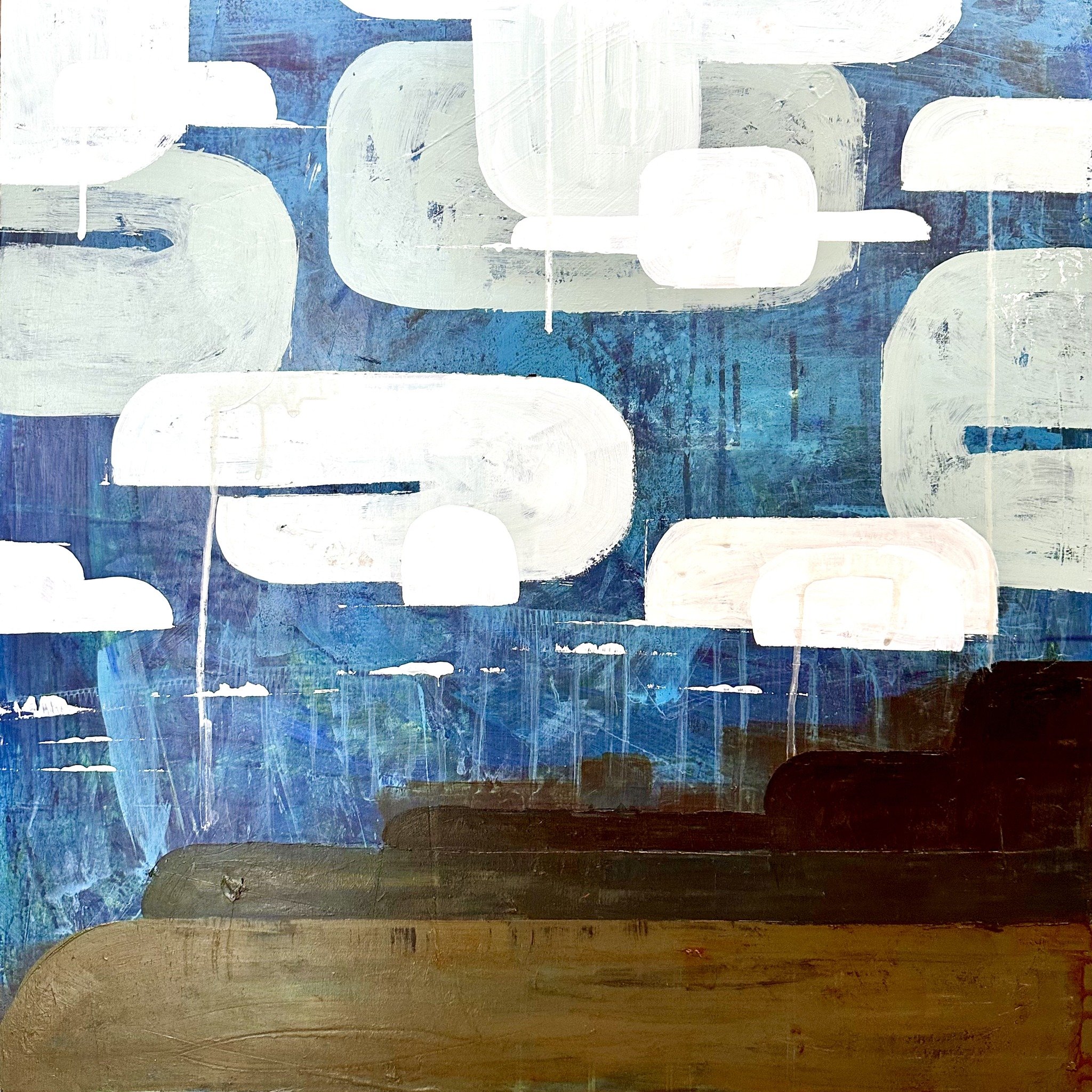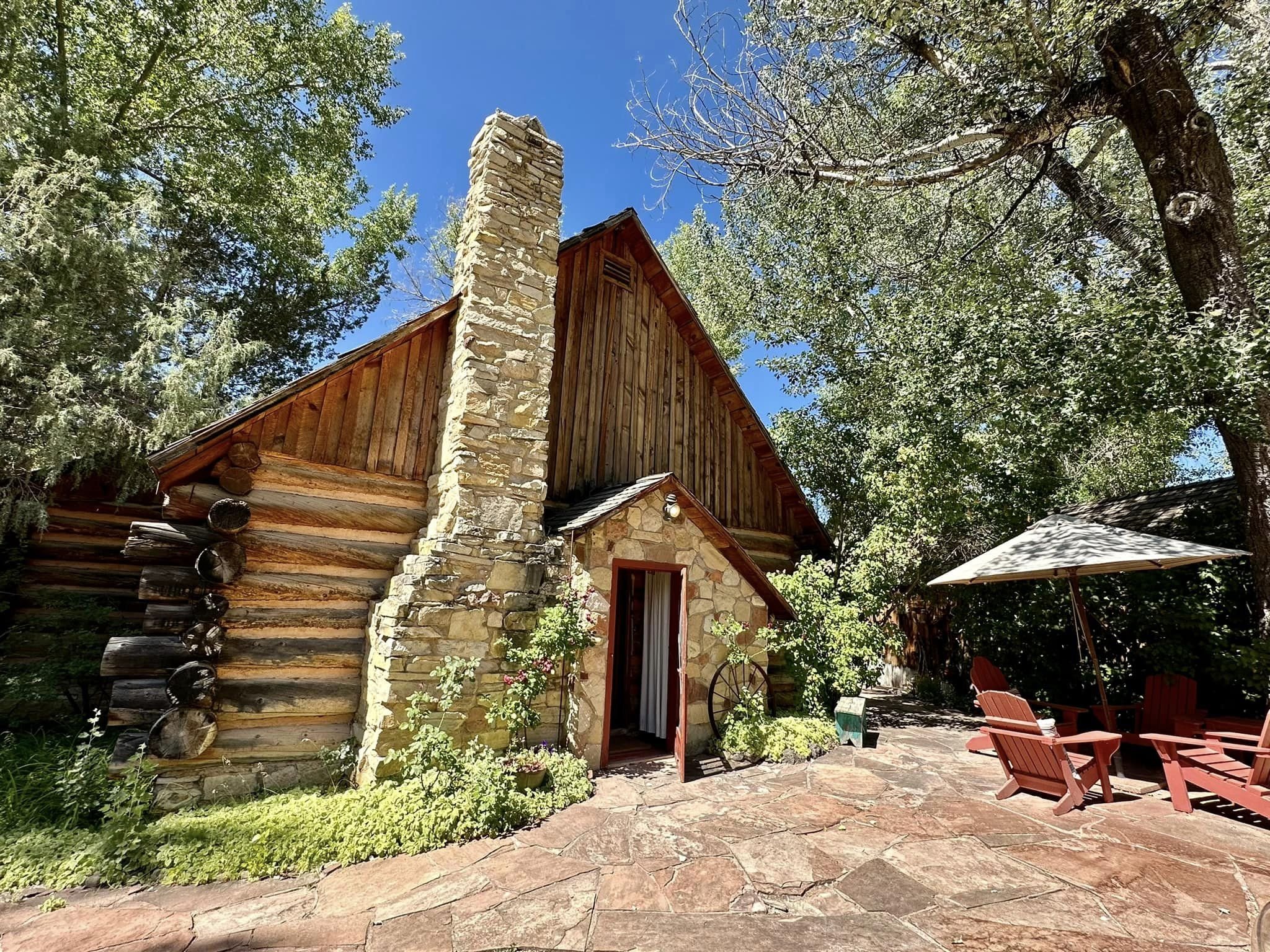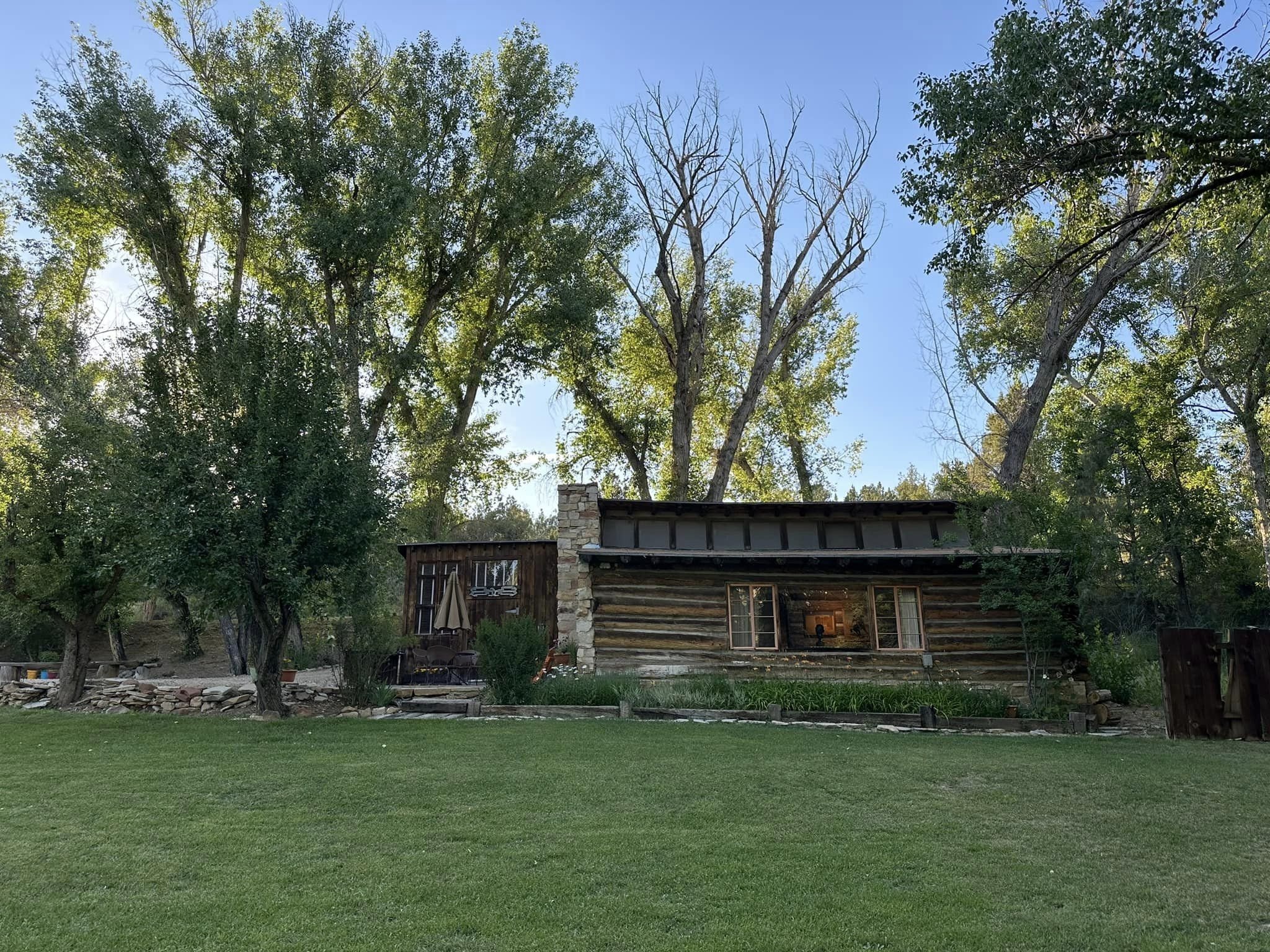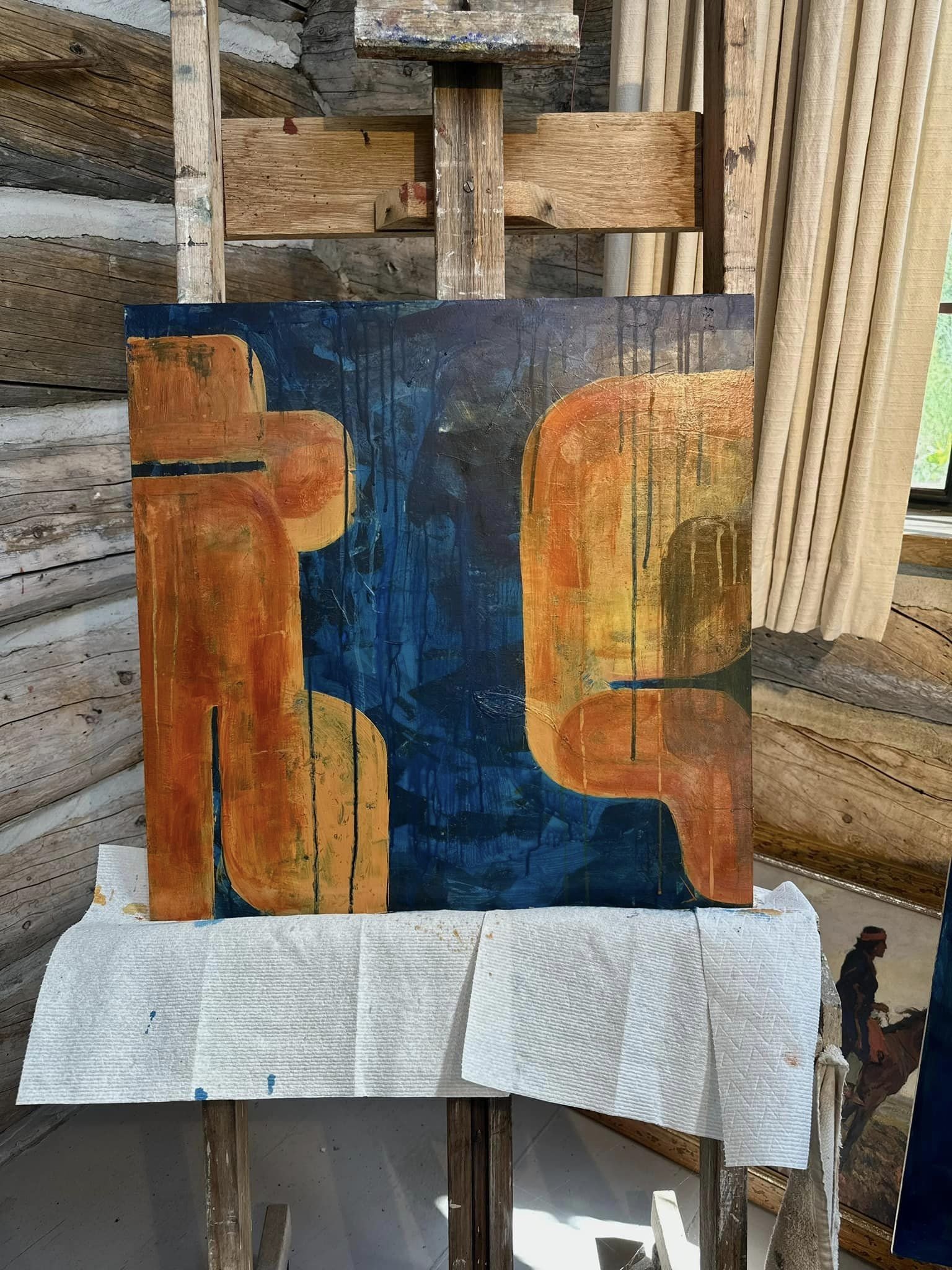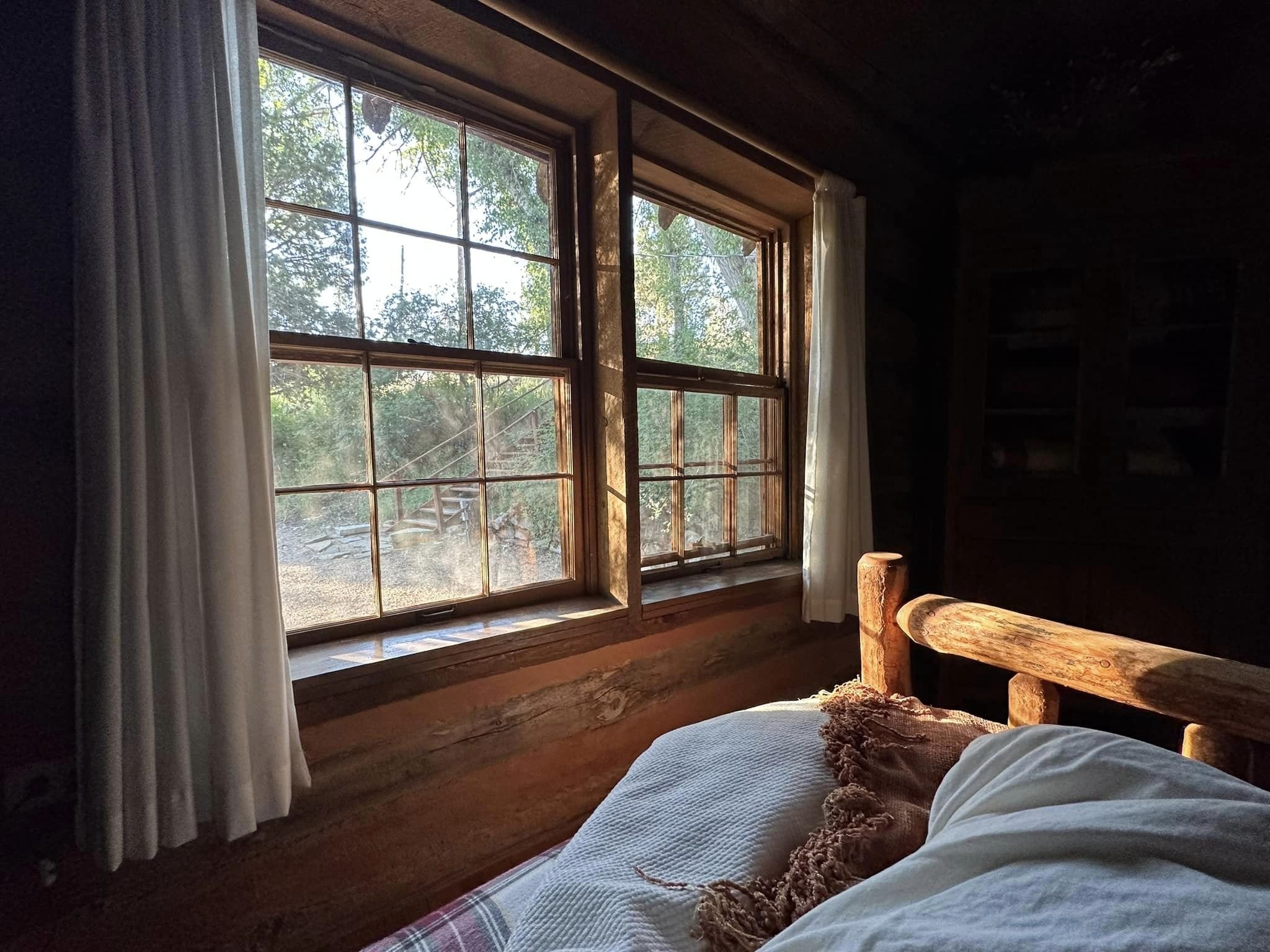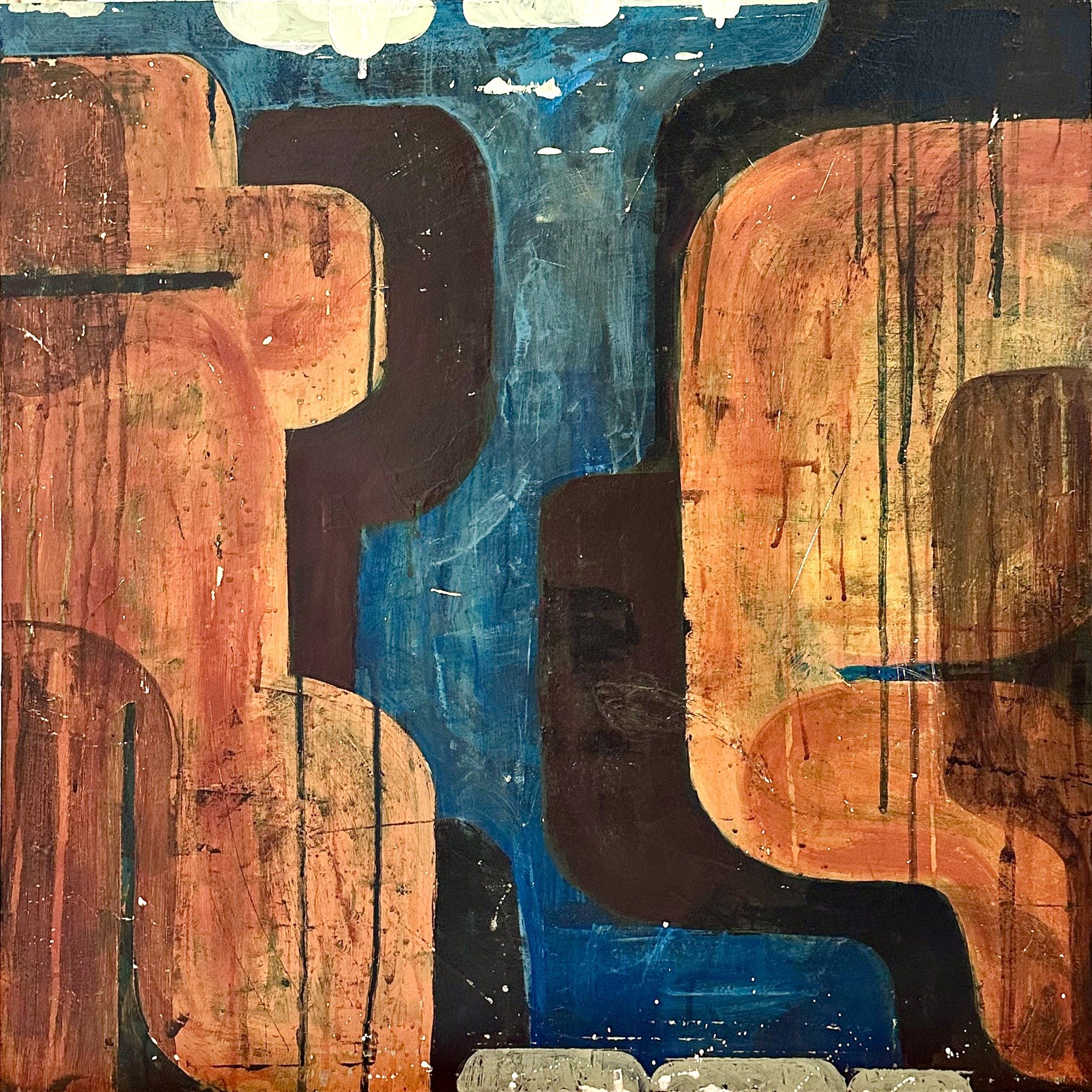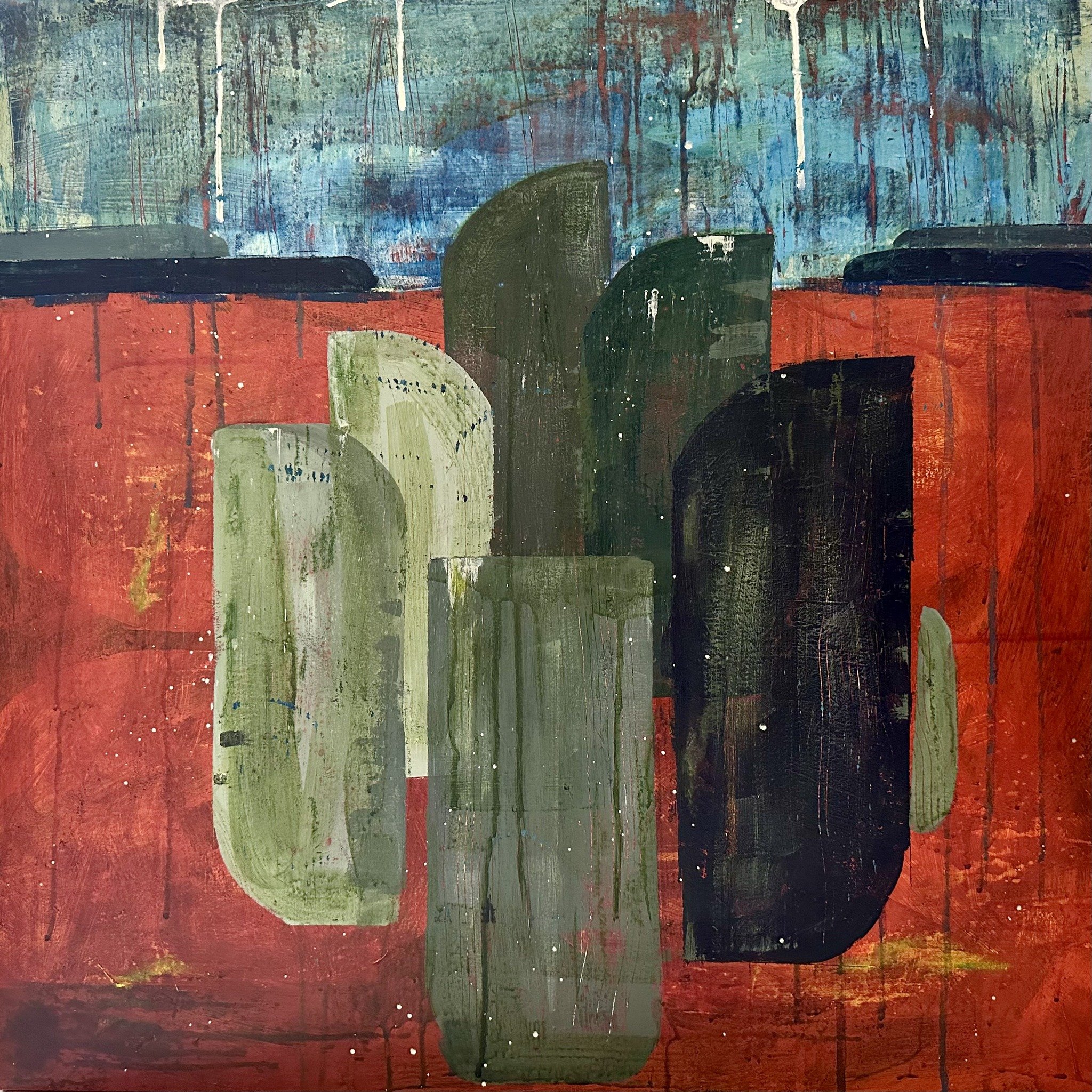Summer artist residency in Utah
“…I met [my] goal, and finished the residency with a sense that I had levelled up my own skills and widened the possibilities for what I can create. I left feeling creatively nourished, confident that I’d spent my time well, and excited about what I’d made. “
A highlight of my summer travels out West was an artist residency at the Thunderbird Foundation Maynard Dixon home.
Maynard Dixon is well-known American landscape painter who travelled extensively through the Southwest in the mid-1900s. His interpretations of the desert are among my most favorite works of art. When my family visited southern Utah in 2022, we visited the property in Orderville where he settled in his later years with wife Edith. Their log cabin is decorated with items that belonged to the couple, and reproductions of Dixon’s paintings.
The home, studio, and accessory buildings are maintained now by the Thunderbird Foundation, and open to visitors to tour, year round. They welcome artists for short residencies in the home and studio. I was fortunate enough to secure three days in July 2023 for myself!
And so, taking a pause from my family and our camping adventures, I embarked on my first residency as a painter. My husband and son dropped me off at the property on a Sunday around noon.
I’d brought a few paints and my sketchbook along on our trip, but I also shipped myself large birch panels and additional supplies specifically for the residency. I set up my supplies in Dixon’s spacious, windowed studio and got some opening layers down on the panels. For the rest of the day I alternately painted, enjoyed a big salad for lunch, took a short nap, watched birds on the grounds (yellow warbler, Cooper’s hawk, hummingbirds) and did an exercise from my painting mastermind group (Art2Life Academy). I baked a small frozen lasagne for dinner, read Tony Hillerman on the patio while it cooked, and then went back to the studio after dinner with a glass of wine to paint more before bed.
Day two was my one full day of solitude. It would normally take me a lot longer to make progress on new pieces, but the uninterrupted time and the invitation to focus really seems to enhance productivity. Ideas flowed and creative steps just presented themselves to me. I finished two pieces that day - they were nothing but a blue background when I woke up that morning, but by the time I retired for the night, they were finished. They also would be the first two of this series to sell. I had two more in process to work on the following day.
Between creative periods in the studio, I enjoyed coffee and a bagel for breakfast, made a salad again for lunch, took a short nap and had a second coffee (iced, it’s hot outside). A slow dinner break with a glass of wine and some reading refreshed me enough to put in another couple of hours before climbing into bed.
I started bright and early on my third day - with a “deadline” of around 3pm to clean up and pack away work before being picked up by my family. Again, I was surprised by how much I was able to get done in such a short time, with dedicated space and freedom to follow my flow. I finished the two remaining pieces - one of which I reworked entirely based on an idea that came to me in the night.
My goals for this time were to channel my feelings for desert spaces into paintings that used my own abstract approach to interpret these landscapes that have seduced me, and feed my senses. I met that goal, and finished the residency with a sense that I had levelled up my own skills and widened the possibilities for what I can create. I left feeling creatively nourished, confident that I’d spent my time well, and excited about what I’d made.
I am grateful to the Thunderbird Foundation for the opportunity. My heart is fullest in the desert, and creating these paintings there where I most love to be made me feel brilliantly alive.
How do I know when a painting is done?
Abstract painting is a journey in a wilderness with no path.
Abstract painting is a journey of trust.
I finished three more paintings this week.
Or at least, I stopped making them… covered them over with a final coat of gel medium and cold wax… I took photos of them… I told a potential collector I can bring them by for viewing. I won’t change them any more now; but I’m not really ever sure they’re done. Finished.
Abstract painting is a journey in a wilderness with no path.
My current series of work, Inner Architecture, is a study in form. I know when I begin to paint that eventually I’ll begin to create variations of this form and those variations will become the anchor for the composition. I know that I’ll experiment with the colours, layer after layer, some will be intentional and others will be fixing what isn’t working for me. I know that I’ll draw into the paint with oil pastels, I know that I’ll paint over the markings, and scrap paint back off to find them again. Each painting that I’ve made has been a walk into uncharted space: a blank birch panel onto which I apply color and forms until something inside my soul has come outside of it, into the painting.
Abstract painting is a trail blazed for another to follow.
There comes a point in each painting when I’ve placed down all of the creative footprints that I can. Now it’s time for someone else to follow, and I think that my trail can take you to a destination that will enliven you.
Abstract painting is a transfer of energy from me, to you.
I was intrigued by an Instagram post from Seattle artist Marjorie Thompson this past week. She wrote “To finish a painting I want to achieve a certain refinement. I’m the only one who knows what that means, and honestly I really don’t know what is I’m looking for. But I do know that I keep going until I feel that I’ve come to the place where it feels right…an intersection… of interest, design/composition, and color harmony. Do you have words to describe refinement in your art?”
I do. In my work, as I replied to Marjorie’s question, “…it’s a sense that, to do anything else would begin to smother the energy of it. That’s how it feels for me when I reach the point of calling something finished.”
Truthfully, I could keep painting, keep refining and changing and adjusting for an eternity on a single painting. A journey with no path can be an invitation to wander forever. But within each painting lies the energy that first brought hand to brush, brush to pigment, pigment to board. The first rush of creation: ideas flowing from within to without. To bring it to a finish, I must sense that it’s a path you can follow, that the vista is one you’ll enjoy along with me. That my energy in creating it is present to energize you when you look at it.
Washington DC based artist creating abstract paintings for home and office, interior design, and home staging. All work is for sale by the artist unless otherwise noted.
#Productivitytips
Productivity tips for creatives: Flow can sometimes be more like Inertia. Here’s where the Fine Art of Stopping comes in.
Like many artists, I have multiple revenue streams. Meaning, I earn income in more ways than just by selling my artwork. And like many artists, I’m also a spouse and a parent, which means there are other people in my life who have claims on my time which I am happy to give them. And like some artists, I’m also a mother, which research has shown puts particular demands on mental energy that non-mothers are less likely to experience. All of these traits mean that I have to cultivate expertise in managing my time and tasks, if I have any hope of protecting my valuable creative space.
The tip I want to share today is the Fine Art of Stopping.
I’m thinking about my various tasks these days less in the sense of “what needs to be completed” and more in the sense of “how much time should I spend on this”. So many tasks related to running a business, keeping the house liveable, keeping the body healthy, and even (especially!) creative work are ongoing. These ongoing tasks might be, for example, writing a blog post for the website (what I’m doing right now), or managing loads of laundry, or getting in a walk, or making the next few moves in the paintings on the easel right now. No matter what progress you make at it today, there will be more to do tomorrow and more the next day, ad infinitum.
As creatives, we know well the feeling of flow — that state of being where we’re absorbed in a task, feeling connected to it, progressing with ease, unaware of time and barely noticing outside distractions. It’s a good feeling and we know that within that state, we are often at our most productive. Because we are familiar with flow, we might even access our flow state more easily than others - finding flow in scheduling of social media posts or in a writing project or in the baskets of laundry that can be folded while enjoying a good binge-worthy series. We all know that flow is a good friend. But like any good friend, it might occasionally overstay its welcome. Flow can sometimes be more like Inertia. Here’s where the Fine Art of Stopping comes in.
Rather than committing to completing a phase of these ongoing tasks, I’ve been commiting to spend a certain amount of my time on them. Perhaps I’ve got many photos to edit. I have a choice between editing for hours or editing for AN hour, and regardless of whatever flow (or inertia) I feel that pulls me to keep working, I go ahead and stop. I put it back on the schedule for the next day, knowing I can pick up where I left off, and I move on. I STOP. I reset my brain, get some water or a snack or chat a little with someone. And I decide what the next thing is that needs my attention. (Specifically, I check my bullet journal which is my day-to-day planner where I track all my various tasks and projects. As long as I am diligent jot down my to-dos and notes, it’s a sure fire guide to all the things that need a little bit of my attention every day.) In this way, I find that I make better progress on more projects in the course of a week, than if I fixate on one or two projects for hours at a time. At the end of a day, I feel as though I’ve had a variety of tasks and experiences - a full day. I’ve kept busy work or admin demands from taking over studio time. Because honestly, at the end of the day, I just want enough time to paint.
What productivity tips keep you running? Share something in the comments that might help all us creatives to keep flourishing!
Art practice as integration
When I returned home, jonesing for that desert now a thousand miles out of reach, I thought more about the idea of Inner Architecture - the pieces that make me Me, I knew I wanted to create a second part to this series but in the colours of the desert.
This summer, I traveled with my husband and son, in our tiny camper named Pearl, from Washington DC to the desert plateau lands of Southern Utah. We had other stops in our eight weeks on the road but without a doubt the three and half weeks we spent in Utah made the deepest impression on me.
It was my first time in the desert. Nothing had prepared me for the bone-deep sensory pleasures of The Desert.
I could go on for, well basically forever, about every nuance of the landscape, the weather, the sky in all its variety, the terror of its deep canyons and the thrill of its stair-step mesas, the scent of sagebrush - different in the windy heat of the afternoon than it is in the cool stillness of night. The marching clouds. The washes. The virga.
Suffice it say that I fell hard. Some part of my soul which hadn’t yet stirred woke up and I felt alive like never before.
An artist friend of mine listened to me wax poetic about the desert for a while this week, as we hiked (back in the woodsy, steamy East Coast). “ I felt like a kid again,” I told her, “It felt like I remember childhood vacations being - magical and formative.” She told me about a podcast she’d listened to recently about how our brains react to the fresh stimuli of extended travel to new places. All those intriguing inputs basically overwhelm our adult brains in a way similar to how children process - with their brains for which it’s ALL new and fresh. It’s psychologically like “being a kid again”. That amazed me. Our brains are so strange and wonderful.
She also asked me how it feels to be back after eight weeks of adventuring. “I’m bored to death,” I admitted. That’s normal too, she told me: our brains adapt to all that delicious new stimuli, soaking it in and bursting into bloom. Turn off the spigot and you feel the mental drought. Ouch. “That’s me,” I said.
And so where does my art come in to this?
In the months before our summer trip, I worked on a series of paintings which I called, as a group, Inner Architecture. The paintings are a wander through my subconscious - themes and ideas and past hidden in the shapes and colours and under layers of each piece. When I returned home, jonesing for that desert now a thousand miles out of reach, I thought more about the idea of Inner Architecture - the pieces that make me Me, I knew I wanted to create a second part to this series but in the colours of the desert. Echos of the memories I carry in my mind of this place that renewed me so thoroughly. To use my art practice to cement the experience into my soul, to integrate it into my every day by putting it first on the palette and then onto the boards.
That’s what I’ve been doing since returning home. Four paintings are currently underway, and I think there are four more to come.
” … out there is a different world, older and greater and deeper by far than ours, a world which surrounds and sustains the little world of men, as sea and sky sustain a ship. The shock of the real. For a little while we are again able to see, as a child sees, a world of marvels. For a few moments we discover that nothing can be taken for granted, for if this ring of stone is marvelous all which shaped it is marvelous, and our journey here on earth, able to see and touch and hear in the midst of tangible and mysterious things-in-themselves, is the most strange and daring of all adventures.”
–Edward Abbey, Desert Solitaire
Studio Journal coming soon
“Work stops at sunset. Darkness falls over the building site. The sky is filled with stars. "There is the blueprint," they say.”
― Italo Calvino, Invisible Cities
“Work stops at sunset. Darkness falls over the building site. The sky is filled with stars. "There is the blueprint," they say.”
― Italo Calvino, Invisible Cities
